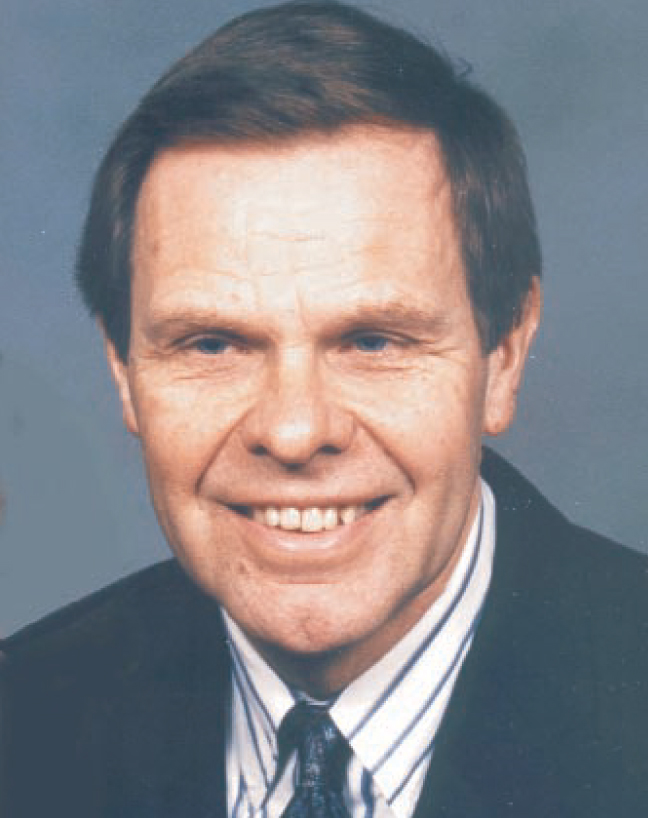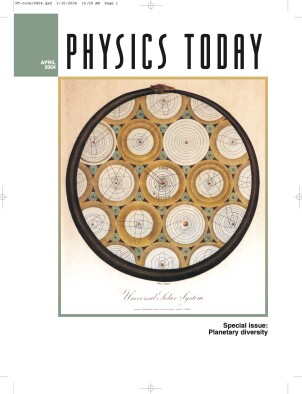David B. Fossan
DOI: 10.1063/1.1752436
David B. Fossan, a world leader in studies of nuclear structure and properties of exotic states of nuclei, died 27 July 2003, following a heart attack. At the time, he was swimming at Long Island’s south shore during an annual beach outing he had organized for his research group. A professor of physics at SUNY Stony Brook, he had been on the faculty there since 1965.
Dave was born in Faribault, Minnesota, on 23 August 1934. He received his BA in physics and mathematics from St. Olaf College in Minnesota in 1956 and his PhD in physics from the University of Wisconsin in 1960. His doctoral thesis, under the direction of Heinz Barschall, was on fast neutron total cross sections of beryllium, carbon, and oxygen.
After a postdoctoral appointment (1961–62) at the Niels Bohr Institute at the University of Copenhagen, Dave took a research staff position (1963–64) with the Lockheed Corp in Palo Alto, California. He then joined the physics department at Stony Brook as a charter member of the new nuclear structure laboratory. His prolific research, remarkable for its breadth of focus, has long been the cornerstone of the laboratory’s program. As new techniques and theory opened new avenues, he returned many times to several themes for exploring nuclei in extreme conditions.
In 1987, Dave was leader in establishing the Gammasphere detector, a national facility for gamma-ray spectroscopy at the Lawrence Berkeley National Laboratory (LBNL). He served on the detector’s steering committee from its inception until 1996. He relied on measurements using the Gammasphere for his research involving the correlations of multiple photons emitted in deexcitations of highly excited nuclei. Gammasphere became notorious when, in the movie The Incredible Hulk, a replica was used as the main character’s vehicle of wrath.
Dave led many studies of heavy nuclei at high spin in which many structures compete in complex quantum superpositions. Using a wide range of techniques, he investigated such phenomena as backbending, the coexistence of spherical and deformed states, prolate and oblate competition, the shears mechanism of magnetic rotation, and the g-factors of yrast states. Those studies provided the detailed understanding of how heavy nuclei acquire their angular momentum on the basis of collective motions of individual nucleons. The 1999 Physics Reports review article of Anatolijs Afanasjev, Fossan, Gregory Lane, and Ingemar Ragnarsson is a standard reference on the transition from collective to noncollective states and serves as a bridge to the study of other mesoscopic systems.
Dave’s earlier studies of nuclear shapes matured in his last few years with the discovery of chiral doublet structures in odd-odd nuclei, in which right and left-handed triaxial nuclei were shown to have a nearly degenerate set of energy levels. Until that finding, the presence of such mirror nuclei had been unknown, and their observation opens new avenues of study of the role of symmetries in nuclear structure.
An exceptional mentor for young scientists, Dave set rigorous standards, and his energy, enthusiasm, and dedication helped him provide an unparalleled learning environment for students. He gave them real responsibility and demanded that they produce, but offered advice along the way. Enormously generous with his time, he went out of his way to work with students in both the laboratory and the classroom.
In the national arena, Dave played a variety of important roles. He served on advisory committees at Brookhaven National Laboratory, the Indiana Cyclotron Facility, LBNL, Oak Ridge National Laboratory, and Argonne National Laboratory. He held guest appointments at BNL, the University of Munich, the Hahn-Meitner Institute in Berlin, LBNL, and the Chalk River Nuclear Laboratories in Canada. He was a member of the editorial board for Physical Review C and chair of the 1987 Gordon Conference on Nuclear Chemistry.
In 1989, Dave received the Humboldt Senior Scientist Award from the Alexander von Humboldt Foundation. In 2002, he was awarded the inaugural State University of New York Chancellor’s Award for Excellence in Research.
Dave’s affability and good nature masked a deep competitive drive, which sometimes was revealed in the demands he placed on himself to extend the understanding of physics. An even more apparent manifestation, though, was his athletic drive. His early love for basketball transformed in later days to frequent rounds of tennis, in which he would put away the opposition with a smile on his face.
We remember Dave for his many contributions to our understanding of the complex processes at work in large and exotic nuclei. His experimental skills, coupled with his deep understanding of the quantum basis for multiparticle systems, distinguished his research career. Even more, we remember him for his outstanding personal contributions to generations of physicists, his fierce honesty, remarkable cheerfulness, and deep interest in bringing out the best in others.

David B. Fossan

More about the Authors
Linwood L. Lee. State University of New York, Stony Brook, US .
Robert L. McGrath. State University of New York, Stony Brook, US .
Gene D. Sprouse. State University of New York, Stony Brook, US .
Paul D. Grannis. State University of New York, Stony Brook, US .
